Implementation of semantic communications for the general communications system is a key challenge in the journey towards 6G. While promising significant improvements in channel bandwidth efficiency to go beyond what is generally considered as Shannon theory based communications, semantic communications create new opportunities to modern high bandwidth applications. The need for a highly efficient communication model has become of paramount importance due to the exponential growth in data traffic on image transfers, streaming, video conferencing, and online learning, which consumes a significant amount of system resources and necessitates longer transmission and processing times. This tutorial focuses on introducing the theory of semantic communication in relation to multimedia content in a mobile communications system.
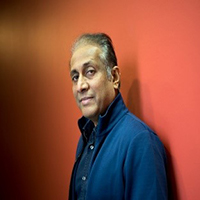
Prof. Nandana Rajatheve, University of Oulu, Finland
Nandana Rajatheva received the B.Sc. (Hons.) degree in electronics and telecommunication engineering from the University of Moratuwa, Sri Lanka, in 1987, ranking first in the graduating class, and the M.Sc. and Ph.D. degrees from the University of Manitoba, Winnipeg, MB, Canada, in 1991 and 1995, respectively. He was a Canadian Commonwealth Scholar during the graduate studies in Manitoba. He held Professor/Associate Professor positions at the University of Moratuwa and the Asian Institute of Technology (AIT), Thailand, from 1995 to 2010. Since August 2010, he has been with the Centre for Wireless Communications (CWC) and affiliated with 6G Flagship project since 2018 and leading the thematic area in wireless connectivity. The research interests of his group, consisting of several industry post-doctoral fellows, doctoral and Master students include machine learning for physical layer, resource allocation, sensing and communications as well as industrial applications. The research is supported by the Finnish government, EU as well as Finnish and other Telecom companies. He was engaged in various project activities at European level, with METIS project leading to 5G being a key initiative. In the ongoing EU 6G project Hexa-X he is leading the task in machine learning and AI for air interface, these will continue in the next project phase Hexa-X II. With over two decades of experience in education and research, Nandana has supervised well over hundred masters and doctoral students who are now spread around the world occupying leading positions in academia and industry. He has published more than two hundred peer reviewed conference and journal papers. He was instrumental in launching various academic programs in Asia in Telecom. The ongoing master’s double degree program with University of Peradeniya, Sri Lanka is one. He is coordinating Finland-India 6G collaboration with various IITs and leading industry players in mobile communications there. Activities are also under progress with Indonesian organizations, both academic and industry.
Prof. Anil Fernando, University of Strathclyde, UK
Prof Anil Fernando is a professor in Video Coding and Communications at the Department of Computer and Information Sciences, University of Strathclyde. He leads the video coding and communication research team at Strathclyde. He has worked on major national and international multidisciplinary research projects and led most of them. His main research interests are in Video coding and communications, Machine Learning (ML) and Artificial Intelligence (AI), signal processing, networking and communications, interactive systems, resource optimizations, distributed technologies, media broadcasting, Quality of Experience (QoE) and intelligent systems. He has published over 350 papers in international journals and conference proceedings and published a book on 3D video broadcasting. He has successfully supervised over 56 PhDs and 30 research fellows. He has contributed to a large number of international research projects and coordinated few international and national projects . He has also led the technical coordination of many international and national projects. In this year, his team was part of commercialising a low cost rapid COVID-19 diagnostic portable device and its technology. He has been working with all major EU broadcasters, BBC, and major European media companies/SMEs in the last decade in providing innovative media technologies for British and EU citizens. Currently, he is involved in commercialising a technology for low cost rapid diagnostic system for farm animals in identifying most common bacterial and viral infections.
The fast developments of 3D vision technologies and applications have raised the great interests from both the academia and industry communities. 3D point clouds can have the strong capability of providing immersive visual experience and high-precision 3D modeling of scenes. Therefore, two typical categories of point cloud applications have been clearly exhibited as the multi-dimensional perception, i.e., human visual perception and machine vision perception. We have witnessed the significant progress of the compression, processing and analysis technologies for point clouds. First, the acquisition of large-scale point clouds and the databases are necessary for algorithm design and evaluations, where the subjective experiments, objective quality assessment, and perception modeling demand new solutions due to the novel geometric structures and attribute distributions of point clouds. Besides, machine vision oriented assessment is also critical to evaluate degraded point clouds for diverse machine applications. Second, the available limited bandwidth always restricts the storage and transmission of point clouds, and efficient compression and streaming technologies have been explored broadly. International standardization organizations and corporations have invested many efforts to develop the non-learning and learning methods to better exploit redundancies for compressing the massive point cloud data. Lastly, there are many kinds of processing tasks for degraded point clouds, such as upsampling, denoising, completion, compression artifact removal, frame interpolation, etc. These enhancement algorithms should be better devised for improvements of human visual experience and machine vision performance. Machine vision problems can widely include classification, segmentation, detection, tracking, place recognition, and so on. In this tutorial, we will discuss the progress made in this area during the past several years, including the modeling of multidimensional perception, and the perception oriented compression and processing technologies. We will also describe the standardization efforts, our open-source project OpenPointCloud, and related application scenarios for the attendees to better investigate these topics.
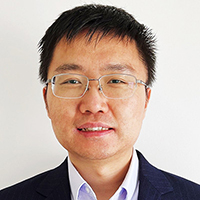
Asst. Prof. Wei Gao, Peking University, China
Wei Gao is currently an Assistant Professor at the School of Electronic and Computer Engineering, Peking University, Shenzhen, China, and also the Director of Laboratory for Open Source Algorithms/Synergy Algorithms at Peng Cheng Laboratory, Shenzhen, China. His research interests include applied perception-inspired multimedia coding and processing, and the related topics of deep learning and artificial intelligence. He has published over 80 journal and conference papers, and applied over 60 global patents. He has led the establishments of several open-source projects, including OpenPointCloud (First Open Source Project for Point Cloud Coding and Processing). In 2021, he won IEEE Multimedia Rising Star Runner Up Award for Outstanding Early-stage Career Achievements in the Area of 3D Immersive Media Research. He is serving Associate Editor for Signal Processing (Elsevier), Neural Processing Letters (Springer), etc. He is an Elected Member of IEEE CASS VSPC-TC, and an Elected Member of APSIPA IVM-TC. He has organized workshops and special sessions at ACM MM 2022, IEEE VCIP 2022, and IEEE ICME 2021 on the topics of visual experience assessment of interactive media, 3D point cloud compression and processing, etc. He is a Senior Member of IEEE.
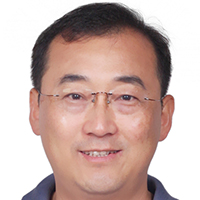
Prof. Ge Li, Peking University, China
Ge Li is currently a Full Professor at the School of Electronic and Computer Engineering, Peking University, Shenzhen, China. He received the Ph.D. degree from Department of Electrical Engineering, Auburn University, AL, USA, in 1999. He has several years of research work experience in industry. His research interests include point cloud compression and its standardization, image/video processing and analysis, machine learning, and signal processing, and he has published over 100 high quality papers, and holds lots of granted US and global patents. He actively submitted many technical proposals to MPEG PCC, and is also currently the Lead Chair for the standardization of point cloud compression in the Audio Video Coding Standard (AVS) Workgroup of China. He served as the Panel Chair of IEEE ICME 2021, and the International Liaison Chair of PCS 2022, etc.
Machine learning techniques have received increasing attention in recent years for solving various problems in image processing, imaging and multimedia applications. Learning-based approaches, ranging from the classic model-based methods such as dictionary and transform learning, to the most recent deep learning methods, etc., provide promising performance in image and multimedia reconstruction, computational imaging, remote sensing, medical imaging and other modalities, comparing to the traditional approaches using hand-crafted models such as with total variation. The focus of this proposed tutorial is to review recent advances in machine learning for image and multimedia reconstruction, from modeling, algorithmic, and mathematical perspectives. In particular, the approaches based on both sparse modeling and deep neural networks will be discussed. By reviewing some of the recent progress on learning-based image processing framework, we will show how the underlying data model evolves from signal processing and sparse modeling, to building deep neural networks, while the "old" ways can also join the new. While most of the tutorial will focus on image and video reconstruction, some recent advances in machine learning for emerging multimedia applications will also be covered in the end. The tutorial will benefit conference attendees from both academia and industry by providing a deeper coverage of recent advances in machine learning based image reconstruction.
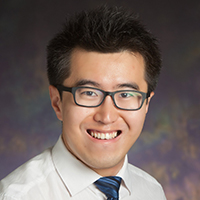
Prof. Bihan Wen, Nanyang Technological University, Singapore
Bihan Wen received the B.Eng. degree in electrical and electronic engineering from Nanyang Technological University, Singapore, in 2012, and the M.S. and Ph.D. degrees in electrical and computer engineering from the University of Illinois at Urbana-Champaign, Champaign, IL, USA, in 2015 and 2018, respectively. He is currently a Nanyang Assistant Professor with the School of Electrical and Electronic Engineering, Nanyang Technological University. His research interests include machine learning, computational imaging, computer vision, image and video processing, and big data applications. Bihan Wen was a recipient of the 2012 Professional Engineers Board Gold Medal, the 2016 Yee Fellowship and the 2022 NTU Early-Career Teaching Award. He was also a recipient of the Best Paper Runner Up Award at the IEEE International Conference on Multimedia and Expo (ICME) in 2020. He is the Program Chair of IEEE MIPR Conference 2022, the Lead Organizer of the LCI workshops at ICCV 2019 and 2021, and the Co-Organizer of IEEE SPACE webinar 2020-2021. He has been an Associate Editor of IEEE TRANSACTIONS ON CIRCUITS AND SYSTEMS FOR VIDEO TECHNOLOGY (T-CSVT) since 2022, and an Associate Editor of MDPI MICROMACHINES since 2021. He has also served as a Guest Editor for IEEE SIGNAL PROCESSING MAGAZINE in 2022. He is the SubCommittee Chair of IEEE Computational Imaging (CI) TC, and the Member of IEEE Visual Signal Processing and Communications (VSPC) TC.
Prof. Saiprasad Ravishankar, Michigan State University, USA
Saiprasad Ravishankar is currently an Assistant Professor in the Departments of Computational Mathematics, Science and Engineering, and Biomedical Engineering at Michigan State University. He received the B.Tech. degree in Electrical Engineering from the Indian Institute of Technology Madras, India, in 2008, and the M.S. and Ph.D. degrees in Electrical and Computer Engineering in 2010 and 2014, respectively, from the University of Illinois at Urbana-Champaign, where he was then an Adjunct Lecturer and a Postdoctoral Research Associate. From August 2015, he was a postdoc in the Department of Electrical Engineering and Computer Science at the University of Michigan, and then a Postdoc Research Associate in the Theoretical Division at Los Alamos National Laboratory from August 2018 to February 2019. His interests include biomedical and computational imaging, machine learning, inverse problems, signal and image processing, data analysis, and optimization. He has received multiple awards including the Sri Ramasarma V Kolluri Memorial Prize from IIT Madras and the IEEE Signal Processing Society Young Author Best Paper Award for 2016 for his paper "Learning Sparsifying Transforms" published in the IEEE Transactions on Signal Processing. A paper he co-authored won a best student paper award at the IEEE International Symposium on Biomedical Imaging (ISBI) 2018, and other papers were award finalists at the IEEE International Workshop on Machine Learning for Signal Processing (MLSP) 2017 and ISBI 2020. He is currently a member of the IEEE Computational Imaging Technical Committee and has served as Guest Editor for the IEEE Signal Processing Magazine. He has organized several special sessions or workshops on computational imaging and machine learning themes including at the Institute for Mathematics and its Applications (IMA), the IEEE Image, Video, and Multidimensional Signal Processing (IVMSP) Workshop 2016, MLSP 2017, ISBI 2018, and the International Conference on Computer Vision (ICCV) 2019 and 2021.
Limits of compression reached by traditional methods like JPEG or J2K are not sufficient to meet the real-world demand with growing data. The increase in data can be attributed to an increase in the sensor resolution, the dynamic range of sensed pixels, the frame rate of videos, etc. This has been impacting the ability to store some of the largest image data contributors, the medical imaging industry and the driving videos which get acquired in automobiles. The bottom line is to achieve the highest compression factor without the loss of relevant information in the images. Compression of images from each industry has its own challenges. The prime challenge in medical imaging is that each modality (MR, CT, X-Ray, etc.) is distinctively characterized by the dynamic range and resolution of the signal and its spatial and statistical distribution. Thus, conventional natural image compression algorithms such as J2K and JPEG often fail to preserve clinically relevant details in medical images. This tutorial will explore how deep learning can be used to overcome these challenges. The generalisability of the deep learning-based compression algorithms in other sectors, especially for the transport sector, will be discussed. The tutorial comprises lectures and hands-on sessions, enabling the participants to understand the theoretical concepts and implement them as they learn. The tutorial will be carried out as six 30-minute sessions with discussion and Q&A sessions.
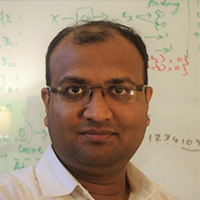
Dr Debdoot Sheet, Indian Institute of Technology, India
Dr. Debdoot Sheet is an Assistant Professor of Electrical Engineering and the Centre of Excellence in Artificial Intelligence at the Indian Institute of Technology Kharagpur since 2014 and founder of SkinCurate Research. He received the BTech degree in electronics and communication engineering in 2008 from the West Bengal University of Technology, Kolkata, MS and PhD degrees from the Indian Institute of Technology Kharagpur in 2010 and 2014 respectively. His current research interests include computational medical imaging, machine learning, image and multidimensional signal processing. He is a DAAD alumni and was a visiting scholar at the Technical University of Munich during 2011-12. He is also recipient of the IEEE Computer Society Richard E. Merwin Student Scholarship in 2012, the Fraunhofer Applications Award at the Indo-German Grand Science Slam in 2012, and the GE Edison Challenge 2013, IEM-UEM Distinguished Young Alumni Award 2016, MHRD Samadhan Award 2020, IEM Distinguished Alumni Award 2022. He is a Chartered Engineer, senior member of IEEE, member of MICCAI, life member of IUPRAI and BMESI. Google Scholar: https://scholar.google.com/citations?user=x-0vLSsAAAAJ&hl=en
Rakshith Sathish, Indian Institute of Technology, India
Rakshith Sathish is currently a master's student at the Indian Institute of Technology Kharagpur. He received his B.Tech from APJ Abdul Kalam Technological university, Kerala. His primary research is in the design and search for energy and compute-efficient deep learning architectures. He has mentored several interns and bachelor students. He has tutored students at the mathematics of Deep Learning 2020 Faculty Development Program / Advanced School organised by the Centre of Excellence in Artificial Intelligence, IIT Kharagpur and Math of Machine Learning (MOML) Summer School 2022, organised by AI4ICPS IIT Kharagpur I Hub Foundation. He has been an active volunteer at IEEE since 2015. He has multiple publications at top conferences like MICCAI and is an active contributor to open-source frameworks like the Intel OpenVINO toolkit. Google Scholar: https://scholar.google.com/citations?user=H-GeOz4AAAAJ&hl=en
Dr Ramanathan Sethuraman, Intel, India
Dr. Ramanathan Sethuraman has 25 years of research and development experience in media algorithms/architectures post Ph.D at Indian Institute of Science. These R&D activities were carried out at Philips Research Labs (PRL) in the Netherlands, Silicon Hive, which was a start-up from PRL and Intel, which acquired Silicon Hive in 2011. 5 years of experience as Director of India operations and video product management at Silicon Hive. Invented VSP (video signal processor) architecture at PRL. Formed SiliconHive start-up in Bangalore and productized VSP (used in Samsung TV series9 and above). At Intel, was a video architect in Platform architecture team of mobile/client product groups for 4 years. Currently, with Data Platform Group as Principal Engineer, focused on emerging server usages (healthcare analytics, media analytics) based on deep learning. Has mentored several PhD and MS students. Has 19 US patents and 20+ US patent applications in flight. Has more than 50 publications in peer-reviewed journals and international conferences. Google Scholar: https://scholar.google.com/citations?view_op=list_works&hl=en&user=hFUdp_EAAAAJ
The worldwide flourishing of the Internet of Things (IoT) in the past decade has enabled numerous new applications through the internetworking of a wide variety of devices and sensors. More recently, visual sensors have seen their considerable booming in IoT systems because they are capable of providing richer and more versatile information. Internetworking of large-scale visual sensors has been named Internet of Video Things (IoVT). IoVT has its own unique characteristics in terms of sensing, transmission, storage, and analysis, which are fundamentally different from the conventional IoT. These new characteristics of IoVT are expected to impose significant challenges to existing technical infrastructures. In this tutorial, an overview of recent advances in various fronts of IoVT will be introduced and a broad range of technological and system challenges will be addressed. Several emerging IoVT applications will be discussed to illustrate the potentials of IoVT in a broad range of practical scenarios. Furthermore, with the accelerated proliferation of the IoVT in myriad forms, the acquired visual data are featured with prohibitively high data volume while low value intensity. These unprecedented challenges motivate the radical shift from the traditional visual information representation techniques (e.g., video coding) to the biologically inspired information processing paradigm (e.g., digital retina coding). In this tutorial, we will further introduce the methodologies that could facilitate the efficient, flexible and reliable representation of the IoVT data based on three streams: texture, feature and model. With the ascending popularity of machine vision technologies that enable better perception of the IoVT data, we believe that the need for IoVT that realizes such efficient representation will become more pronounced. We hope that with this introduction we could stimulate fruitful results and inspire future research to this fast-evolving field.
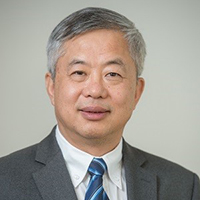
Prof. Chang-Wen Chen, The Hong Kong Polytechnic University, China
Chang Wen Chen received his BS from the University of Science and Technology of China in 1983, MSEE from the University of Southern California in 1986, and Ph.D. from the University of Illinois at Urbana-Champaign in 1992. He is currently Chair Professor of Visual Computing at The Hong Kong Polytechnic University. Before his current position, he served as Dean of the School of Science and Engineering at The Chinese University of Hong Kong, Shenzhen from 2017 to 2020. He also served as an Empire Innovation Professor at the University at Buffalo, the State University of New York from 2008 to 2021. He was Allen Henry Endow Chair Professor at the Florida Institute of Technology from 2003 to 2007. He was on the faculty of Electrical and Computer Engineering at the University of Rochester from 1992 to 1996 and on the faculty of Electrical and Computer Engineering at the University of Missouri-Columbia from 1996 to 2003. He has served as the Editor-in-Chief for IEEE Trans. Multimedia from January 2014 to December 2016, and the Editor-in-Chief for IEEE Trans. Circuits and Systems for Video Technology from January 2006 to December 2009. He has been an Editor for several other major IEEE Transactions and Journals, including the Proceedings of IEEE, IEEE Journal of Selected Areas in Communications, and IEEE Journal of Emerging and Selected Topics in Circuits and Systems. He has served as Conference Chair for several major IEEE, ACM, and SPIE conferences related to multimedia communications and signal processing. His research has been funded by both government agencies and industrial corporations. His research interests include multimedia communication, multimedia systems, mobile video streaming, Internet of Video Things (IoVT), image/video processing, computer vision, deep learning, multimedia signal processing, and immersive mobile video. He is an IEEE Fellow (2005), a SPIE Fellow (2007), and an elected member of the Academia European (2021).
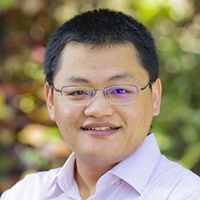
Dr Shiqi Wang, City University of Hong Kong, China
Shiqi Wang (Senior Member, IEEE) received the B.S. degree in computer science from the Harbin Institute of Technology in 2008 and the Ph.D. degree in computer application technology from Peking University in 2014. From 2014 to 2016, he was a Post-Doctoral Fellow with the Department of Electrical and Computer Engineering, University of Waterloo, Waterloo, ON, Canada. From 2016 to 2017, he was a Research Fellow with the Rapid-Rich Object Search Laboratory, Nanyang Technological University, Singapore. He is currently an Assistant Professor with the Department of Computer Science, City University of Hong Kong. His research interests include video compression, image/video quality assessment, and image/video search and analysis. He has proposed more than 60 technical proposals to ISO/MPEG, ITU-T, and AVS standards, and authored or coauthored more than 200 refereed journal articles/conference papers. He received the 2021 IEEE Multimedia Rising Star Award, 2021 The President’s Awards from City University of Hong Kong, Best Paper Award from IEEE VCIP 2019, ICME 2019, IEEE Multimedia 2018, and PCM 2017. His coauthored article received the Best Student Paper Award in the IEEE ICIP 2018. He serves as an Associate Editor for IEEE Transactions on Circuits and Systems for Video Technology.
The applications of video streaming are the primary drivers of Internet traffic, as over 82% of IP traffic in 2022. The prevailing technology to stream live and video-on-demand (VoD) content over the Internet is HTTP Adaptive Streaming (HAS). In HAS, the content is encoded at multiple representations (bitrate-resolution pairs), and delivered incrementally using segments (or chunks) of encoded representations. This allows for dynamic selection of different representations during playback, and the HAS model supports delivery under different and changing network- and device-specific conditions. As the demand for video streaming applications is on the rise, improved streaming methods, as well as video codecs and video content optimization algorithms, are being developed to meet this demand. This tutorial first presents a detailed overview of the existing file formats, protocols (HLS, DASH, CMAF), video codecs (H.264, HEVC, AV1, VVC), and quality assessment methods (PSNR, SSIM, VMAF, P.1203, CTA2066) used for streaming. Particular emphasis will be given to new video codecs, such as Versatile Video Coding (VVC), and their features applicable to streaming. We will then focus on recent advances in video encoding optimizations for HAS streaming. We will then introduce per-title, content-aware, and context-aware encoding methods, which optimize bitrate ladders based on the characteristics of videos and other contexts. It will also be presented how representations are selected in a way that bitrate ladders are optimized over various dimensions, including spatial resolution, frame rate, energy consumption, device type, and network condition. Additionally, methods for reducing the latency of dynamic ladder generation and fast multi-rates encoding will be covered. Finally, we will discuss various areas of recent progress in the design of streaming systems, including end-to-end modelling, optimization, and analysis, and highlight remaining open problems in the field.
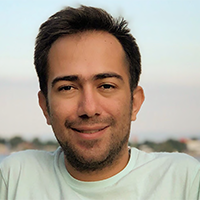
Dr. Hadi Amirpouor, Alpen-Adria-Universität Klagenfurt
Hadi Amirpour currently serves as a postdoctoral research fellow at the Christian Doppler (CD) Laboratory ATHENA at the University of Klagenfurt. In 2022, he received his Ph.D. in computer science from the University of Klagenfurt. He also holds two B.Sc. degrees in Electrical and Biomedical Engineering and an M.Sc. degree in Electrical Engineering from the K. N. Toosi University of Technology. He has been involved in the EmergIMG project, a Portuguese consortium focused on emerging imaging technologies, which was funded by the Portuguese funding agency and H2020. His research interests include video streaming, image and video compression, quality of experience, emerging 3D imaging technology, and medical image analysis. Additionally, he has played an active role in standardization committees such as JPEG Pleno and MPEG. He has also been co-chairing Qualinet TF7 since 2021, and has been involved in organizing special sessions, workshops, and other events at international conferences such as IEEE ICME 2023, ACM Multimedia 2022, IEEE EUVIP 2022, and ACM MobiSys 2022. Further information is available at https://hadiamirpour.github.io
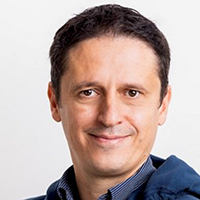
Prof. Dr. Christian Timmerer , Alpen-Adrian-Universität Klagenfurt
Christian Timmerer received his M.Sc. (Dipl.-Ing.) in January 2003 and his Ph.D. (Dr.techn.) in June 2006 (for research on the adaptation of scalable multimedia content in streaming and constraint environments) both from the Alpen-Adria-Universität (AAU) Klagenfurt. He is currently a Full Professor at the Institute of Information Technology (ITEC) and is the Director of the Christian Doppler Laboratory ATHENA (https://athena.itec.aau.at/). His research interests include immersive multimedia communication, streaming, adaptation, Quality of Experience, and Sensory Experience. He has co-authored seven patents and more than 300 articles in these areas, including various invited talks and keynotes. He was the general chair of WIAMIS 2008, QoMEX 2013, MMSys 2016, and PV 2018 and has participated in several EC-funded projects, notably DANAE, ENTHRONE, P2P-Next, ALICANTE, SocialSensor, COST IC1003 QUALINET, ICoSOLE, and SPIRIT. He also participated in ISO/MPEG work for several years, notably in the area of MPEG-21, MPEG-M, MPEG-V, and MPEG-DASH, where he also served as standard editor. Dr. Timmerer served and serves on various scientific committees, e.g., IEEE Multimedia, Elsevier Signal Processing: Image Communication, ACM SIGMM Records, IEEE Transactions on Multimedia (2014-2018), IEEE Computer (2014-2016), IEEE MMTC (2011-2018), and is a regular TPC member of IEEE MIPR, IEEE ICC, IEEE INFOCOM, IEEE VCIP, IEEE Globecom, IEEE ICC, IEEE ISM, QoMEX, ACM MMSys, ACM MM, ACM NOSSDAV, Packet Video, IEEE ICME, etc. Recently, he has been appointed IEEE Communications Society Distinguished Lecturer for the term 2021-2023. In 2012, he co-founded Bitmovin (http://www.bitmovin.com/) to provide professional services around MPEG-DASH, where he holds the position of the Chief Innovation Officer (CIO) – Head of Research and Standardization. Further information is available at http://blog.timmerer.com
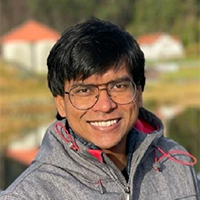
Dr. Nabajeet Barman, Kingston University & Brightcove
Nabajeet Barman is a Principal Engineer, Research at Brightcove, working on encoding optimizations and advanced quality metrics for video streaming applications. He is also an Adjunct Lecturer in applied computer science at Kingston University London. Previously, from 2014 to 2015, he worked at Bell Labs, Stuttgart, Germany, after which he joined Kingston University London as a Marie Curie Fellow with MSCA ITN QoE-Net, from 2015 to 2018 and a Postdoctoral Research Fellow from 2019 to 2020. He has published in many international conferences and journals and is an active reviewer for many conferences and journals. He is a Fellow of the Higher Education Academy (FHEA), UK. He is a Board Member of the Video Quality Expert Group (VQEG) as a part of the Computer Graphics Imaging (CGI) Group and a member of various standardization groups, such as ITU-T SG16 and MPEG, SVA, CTA, DASH-IF, and UHDF. Nabajeet Barman received the B.Tech. degree in electronics engineering from NIT, Surat, India, the M.Sc. degree in IT from Universität Stuttgart, Germany, and the Ph.D. and MBA degrees from Kingston University London, UK. More details are at: https://www.kingston.ac.uk/staff/profile/dr-nabajeet-barman-120/
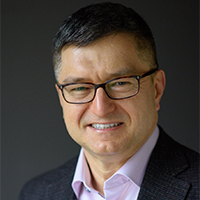
Dr. Yuriy Reznik, Brightcove
Yuriy Reznik is a Technology Fellow and Vice President of Research at Brightcove, Inc. Previously, he held engineering and management positions at InterDigital, Inc. (2011-2016), Qualcomm Inc. (2005-2011), and RealNetworks, Inc. (1998-2005). In 2008 he was a Visiting Scholar at the Information Systems Laboratory at Stanford University. Since 2001 he was also involved in the work of ITU-T SG16 and MPEG standards committees and made contributions to several multimedia coding and delivery standards, including ITU-T H.264 / MPEG-4 AVC, MPEG-4 ALS, ITU-T G.718, ITU-T H.265 / MPEG HEVC, and MPEG DASH. Several technologies, standards, and products that Yuriy Reznik has helped to develop (RealAudio / RealVideo, ITU-T H.264 / MPEG-4 AVC, Zencoder, Brightcove CAE, and MPEG-DASH) have been recognized by the NATAS Technology & Engineering Emmy Awards. Yuriy Reznik holds a Ph.D. degree in Computer Science from Kyiv University. He is a senior member of IEEE, a senior member of SPIE, and a member of the ACM, AES, and SMPTE. He is a co-author of over 150 conference and journal papers, and co-inventor of over 70 granted US patents. Additional information is available at http://reznik.org
The ICME 2023 organising committee invites proposals for tutorials. We welcome half-day tutorials (about 3 hours each) on established or emerging topics of interest, including (but not limited to):
Tutorial proposals should be in PDF format and must be no longer than 4 pages. All proposals should include the following information:
Proposals will be evaluated based on the following criteria:
Please submit the proposals in PDF format to the relevant Tutorial chairs.
Tutorial proposal submission deadline 15-Dec-22, All submissions are due 11:59PM Pacific time.

CWI, Netherlands
p.s.cesar@cwi.nl
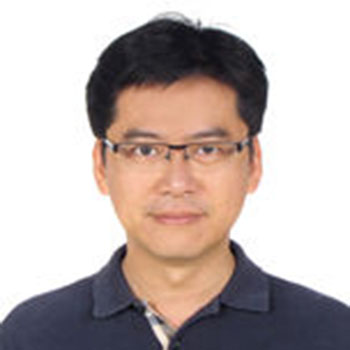
Peking University, China
lingyu@pku.edu.cn
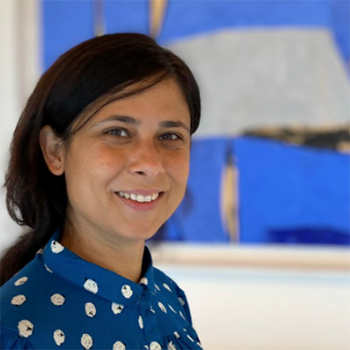
University of Padova, Italy
federica.battisti@unipd.it